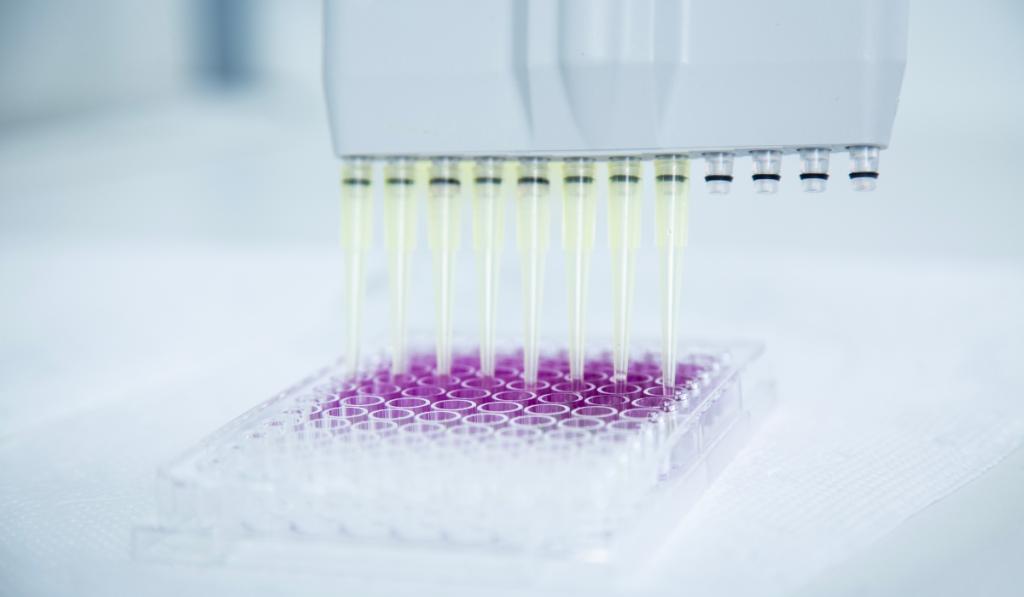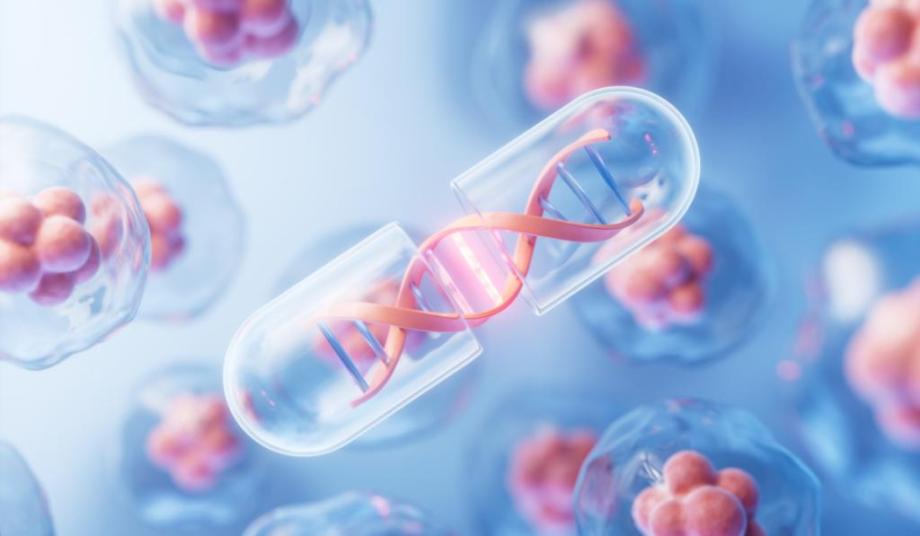The first human genome was deciphered two decades ago (an astronomical effort that took 13 years and about $3 billion), and at the time, it was hard to predict that sequencing techniques would go on to become affordable, scalable and accessible enough to convince the healthcare buyer. Today, genetic sequencing is leading the way in integrating genomic technologies into public health system routine care, more specifically for screening (identification of individuals who may be at risk of a condition) and diagnosing (confirmation that the individual is affected by a condition). The success of genomics can be attributed to the fundamental technique of Next Generation Sequencing (NGS) and the multitude of enabling technologies that were developed to underpin it. As a result, new genomic technologies, such as cell and gene therapies, are now emerging with the potential to transform healthcare – should they become available to the many patients in urgent need of new treatment options.
What are the present challenges and necessary solutions that are needed to accelerate patient access to cell and gene therapies?
What are cell and gene therapies?
Cell and gene therapies (CGTs) are currently pushing genomic technologies towards their next frontier in healthcare, by bringing lifesaving, personalised treatments to the market.
CGTs are a promising new treatment category where a person’s genes and/or cells are modified to treat or cure a disease. To the best of our knowledge, there are currently about 30 CGTs approved by the FDA and about 15 authorised on the European market, the majority of which were approved in the last five years. These have been able to cure previously uncurable diseases, particularly blood cancers and rare genetic conditions.
However, cell and gene therapies are still extremely complex and expensive to develop, manufacture and distribute. For example, Libmeldy, the latest to be approved for use on the NHS, is the most expensive drug in the world at £2.8 million a dose. As a result, treatment costs are often prohibitive for the payers, and it is estimated that less than 2% of patients who could benefit from CGTs have gotten access.
Much like genomics 20 years ago, CGTs are at an inflection point in their development, where envisioning an affordable, scalable and accessible future might be challenging to fully embrace. Scientific research has however demonstrated the health economic benefits to be had from accessing gene and cell therapy, and the importance of increasing public access to these techniques is recognised globally. While investments in the field are currently peaking thanks to financial and regulatory incentives already in place, more innovation is still needed on the manufacturing side to drastically reduce bioprocessing complexity and delivery costs.
Manufacturing for tailored and personalised treatment – the case for cell and gene therapies
As with NGS, it will be the development of the enabling technologies over the coming decades that facilitates the increase in scale and reduction in cost needed for cell and gene therapies to reach their potential and become widely accessible.
The eye-watering costs of CGTs on the market today is predominantly due to their highly complex bioprocess manufacturing requirements. Production of CGTs is unlike typical pharmaceutical drugs manufacturing, which can be manufactured at a large scale, at centralised facilities, and then packaged, shipped and stored in relatively standard conditions. Instead, they are made from viruses or living cells often designed to be highly personalised medicinal products. Tailoring the therapy to each individual patient plays a big role both in the astounding clinical efficacy of these therapies, but also their cost.
For example, a common approach, as was the case for the Libmeldy therapy, involves the patient’s own stem cells (autologous) being removed. The patient’s cells are then isolated and sent to a specialist current Good Manufacturing Practice (cGMP) facility which is equipped with a suite of laboratory equipment and highly skilled staff. Here, they will undergo a series of complex, cutting-edge, bioprocessing steps to edit the genes, expand the cells, purify them, complete quality checks and so on. This multi-step process takes several weeks or months before being ready to ship back to the patient for re-administering as their personalised therapy. It must also be very highly controlled and done in single batches to avoid cross-contamination between patients, or contamination from other sources.
These manufacturing challenges are well known and as such there are a wide range of innovative solutions under development which hope to tackle them. Some involve different approaches to the therapy itself, for example by using donor cells (allogeneic) so they can be manufactured as off-the-shelf therapies. However, as this makes them no longer personalised, it is feared they do not have the same level of efficacy or as long-lasting effects as their autologous counterparts.
Other approaches involve editing the genes in vivo, or in situ, therefore avoiding the costly cell manipulation steps in vitro. Innovations have also focused on improving the manufacturing processes. For example, closed, single-use technologies, which helps to remove much of the contamination risks, or through improved techniques for cell isolation and manipulation, as well as modular automation and robotics technologies.
What many of these different approaches have in common is the need for bespoke, automated, closed systems, suitable for decentralised distribution and with advanced process controls built in. Achieving this will require novel product design and engineering, to ensure the technology performs both accurately and consistently.
The development of such enabling technologies is at the beginning of a rapid maturation phase in the industry. Much like for NGS, the success of these technologies will be the key to unlocking the potential of cell and gene therapies. However, success is of course not inevitable. It relies on sufficient political will and funding.
The health economics of cell and gene therapies
Alongside manufacturing costs and challenges, getting CGTs to patients also raises a unique health economic challenge. The nature of this depends on the system of payment and reimbursement, which varies across countries. Regardless of these differences, one key element that contributes to funding CGTs, or indeed any other health technology, is the cost-effectiveness evaluation. This evaluation is performed as part of a broader health technology assessment (HTA), which explores the value of a health technology in terms of its clinical effectiveness as well as its economic impact. For example, in the UK, these assessments are known as technology appraisals. They are performed by the National Institute for Healthcare and Excellence (NICE) to make recommendations to the NHS on funding and resourcing. Cell and gene therapy introduces new complexities to these evaluations not only due to the high production costs, but also because of the lack of data available on their long-term outcomes.
Broadly speaking, a health economic evaluation looks at how an intervention compares to the current standard of care in terms of cost and impact on people’s health and quality of life. This can be summarised by an incremental cost-effectiveness ratio (ICER), representing the difference in cost divided by the difference in impact. Each HTA body may have its own requirements around modelling methods that help reach a comprehensive ICER, but a common measure used for the quantification of health impact is quality-adjusted life years (QALYs).
QALYs represent a prediction of the number of life years that are weighted by the predicted quality of those life years. To apply a quality-of-life weighting on a scale from 0 to 1, estimates are made regarding how much pain people are likely to be in, their mental health and their ability to carry out activities of daily life. This data can be derived from standardised questionnaires that are used in clinical studies. When performing a health economic evaluation, the question is: ‘How much does the intervention cost per predicted QALY gained?’

For any health technology, this quite is a difficult question to answer. How do you predict the number of QALYs gained by an intervention? Health economic modelling looks at clinical efficacy results and breaks down the patient group into distinct clinical subpopulations. These are then analysed regarding their potentially different responses to treatment, their reliance on healthcare systems, and the likelihood and level of certainty around these outcomes and how they may change or stabilise over time.
When looking at cell and gene therapies, the equation is unique. Often these therapies are used to treat rare conditions, so the patient populations are smaller and there is less data available. In addition, the costs are much higher, and thus, the cost per QALY that is considered cost-effective needs to be looked at differently. NICE has a specific appraisal process for highly specialised technologies (HSTs) that are meant for very rare and severe diseases and thus require an appraisal that acknowledges the novelty of the innovation and the gaps in evidence. Compared to a standard appraisal, for which NICE set a threshold of £20,000-30,000 per QALY, highly specialised technologies can cost up to £100,000 per QALY to be deemed cost-effective.
Another unique characteristic of genomic technologies like CGTs is that they can have QALY gains of a high magnitude. Libmeldy, for example, is life saving and could provide many healthy years to patients who would otherwise have died young. This is accounted for in the evaluation of impact on not only the individual patient but their families, carers and environments, and ultimately the cost-effectiveness estimate. However, since the data available on these long-term effects is limited, there is some uncertainty around how stable and frequent that treatment response is, making the prediction of the QALYs gained challenging and subject to scrutiny. To account for this uncertainty, the highly specialised technology appraisal may include a recommendation to the NHS only on certain conditions. Libmeldy is recommended on the condition of a confidential commercial arrangement with the manufacturing company, providing a discount to the NHS. This helps share some risk and accommodate uncertainty.
This recommendation from NICE on the use of Libmeldy in the NHS specifies that only specific subpopulations of patients with metachromatic leukodystrophy (MLD) may be prescribed it – children with late infantile or early juvenile types. This is in line the marketing authorisation for use of the intervention in Europe by the European Medicine’s Agency (EMA), which states the populations for which Libmeldy is approved for use. NICE’s recommendation also requires the manufacturer to gather of long-term evidence, another condition stimulated by EMA in the approval of Libmeldy. In order for it to be approved for use in Europe, the manufacturer had to commit to conducting studies to assess long-term efficacy and safety, helping to address the evidence gap mentioned previously around long-term effects of the intervention. This serves as a reminder that health economic evaluations and regulatory approvals are distinct, but inextricably linked – any recommendation for use in a hospital system based on a health economic assessment has to fall within the remit of the intervention’s marketing authorisation.
Regulatory approval
The last step in product market entry is securing regulatory approval and it is essential to address these requirements early in development. For cell and gene therapies, it may be beneficial to open a dialogue with the regulatory authorities early in order to streamline the approval process and address potential concerns.
As therapies targeting serious conditions and unmet needs, such as cancer, sickle cell disease and haemophilia, CGTs are likely to qualify for special regulatory programmes implemented in many geographical settings, including the USA and the EU. Through financial incentives as well as alternative regulatory pathways, these programmes mean to encourage and facilitate investments and development of treatments with large health gain potential, but with significant economic and regulatory roadblocks arising from the nature of the diseases.
Orphan Drug designation programmes, for instance, specifically aim at boosting development of rare diseases therapies by providing several benefits, such as tax credits to support clinical trials, reduced or waived fees, extended market exclusivity, and assistance with clinical protocols. The Libmeldy treatment qualified for this programme.
In addition, accelerated approval pathways are in place that provide an alternative regulatory route for developing treatments for challenging diseases, especially when demonstrating long-term clinical benefits is difficult. These programs allow, for example, the use of clinical endpoints as evidence of effectiveness instead of traditional clinical trials, which would be too time consuming in regard to the urgency to fill the unmet clinical need. However, developers are still mandated to monitor the treatment’s safety and efficacy for years after authorisation, with the possibility of market approval withdrawal if public wellbeing concerns arise.
In the case of Libmeldy, the sponsor used neurocognitive function as a clinical endpoint to demonstrate the therapy’s effectiveness quickly and safely. While the therapy’s clinical benefit of complete remission and improved quality of life for MLD patients is being monitored, it was deemed acceptable to use this approach to bring the life-saving drug to patients rapidly.
Route to market planning
The manufacturing, health economic, regulatory and clinical trial challenges facing developers of cell and gene therapies, as described above, cannot be tackled in isolation. The therapeutic developers must create their route to market plan not only factoring in all of these different aspects, but how they interact and impact each other.
For example, an accelerated regulatory pathway may open the door to small size clinical trials, for which the product can be produced in small batches, especially for Phase I and II. However, if this is completed without production representative manufacturing or a thorough understanding of the critical process parameters (CPPs) and critical quality attributes (CQAs), the chances of success being repeated in later clinical trial phases and as production is scaled are slim.
As discussed in our blog on planning a product development roadmap, it is important to bring in many different perspectives into this process, including experts in CGT development, regulatory, quality, clinical trials, commercial, market access, bioprocessing, manufacturing and programme management. Doing so will ensure a realistic yet accelerated roadmap is produced, which in turn can greatly increase the chances of executing a cost effective and timely CGT development.

Bringing cell and gene therapies into routine care
Cell and gene therapies have a clear role to fulfill in public healthcare, with the potential to offer personalised, potentially life-saving treatments to patients that would otherwise have no other effective and safe alternative. Increasingly, more of these therapies are receiving market approvals in multiple geographical markets, leveraging years of technical and scientific innovation. Despite this, it may still be some time until technical solutions have been found that reduce costs sufficiently to convince both sponsors and buyers to pay in.
Governments and regulatory bodies worldwide have already put new regulatory pathways and financial incentives in place, aiming to encourage developers and sponsors to invest in the development of CGTs, particularly for unmet medical needs and serious diseases with limited treatment options. Despite these efforts, the complexity of bioprocessing manufacturing requirements means it remains a challenge to lower production costs, limiting access to these therapies. This means that millions worldwide might be left in a frustrating situation, unable to access already authorised, life-saving treatments.
Nevertheless, CGTs are at an exciting and flourishing tipping point, slowly but encouragingly making their way into public healthcare systems. Although it may take a couple of decades for them to become affordable enough to be offered routinely, the long-term human and economic benefits make the investment well worth it. The similar, successful path undertaken by genomic sequencing technologies 20 years ago serves as a reminder that continuous investment and technological innovation in CGTs should persevere for the benefit of all.



